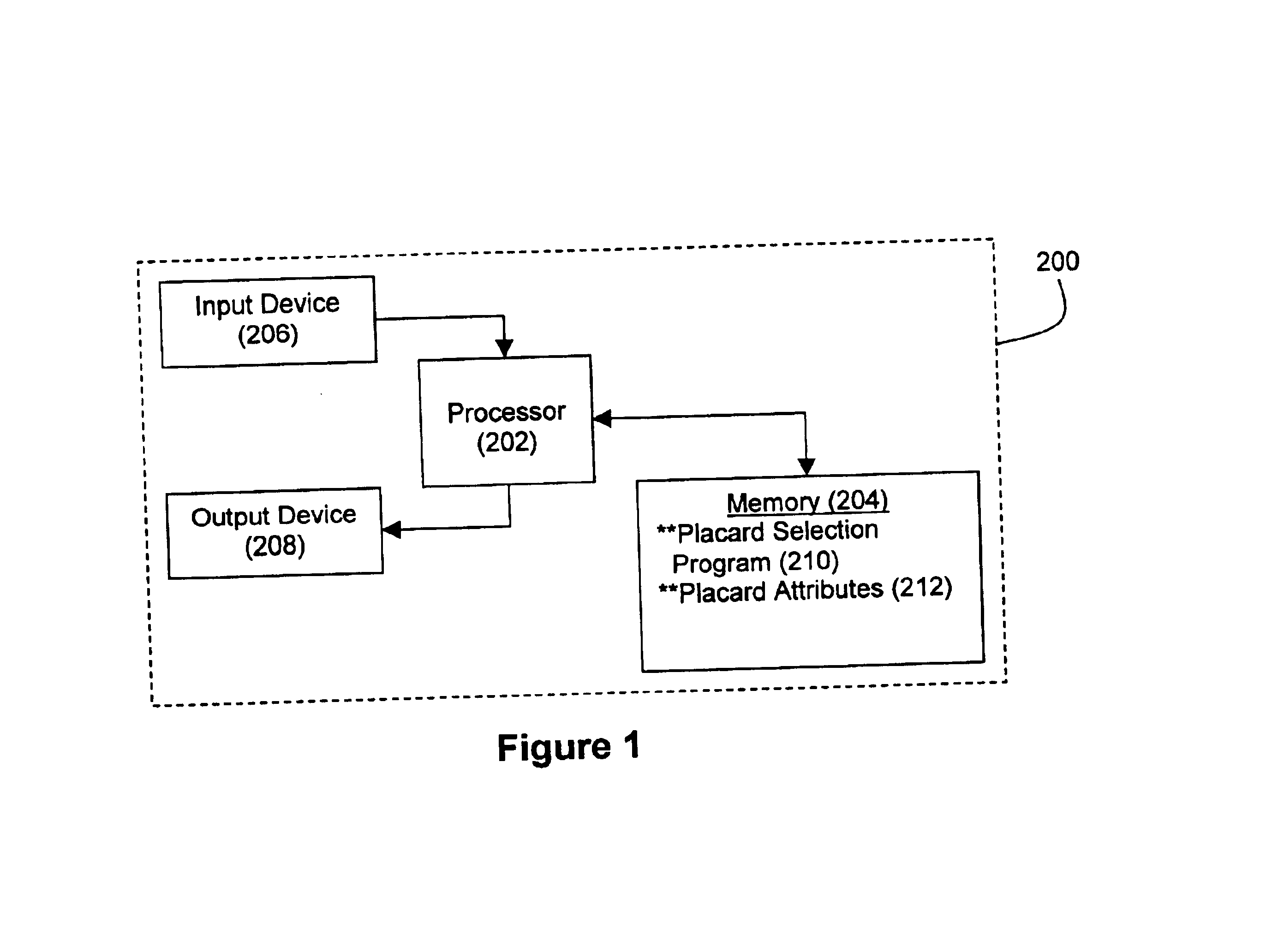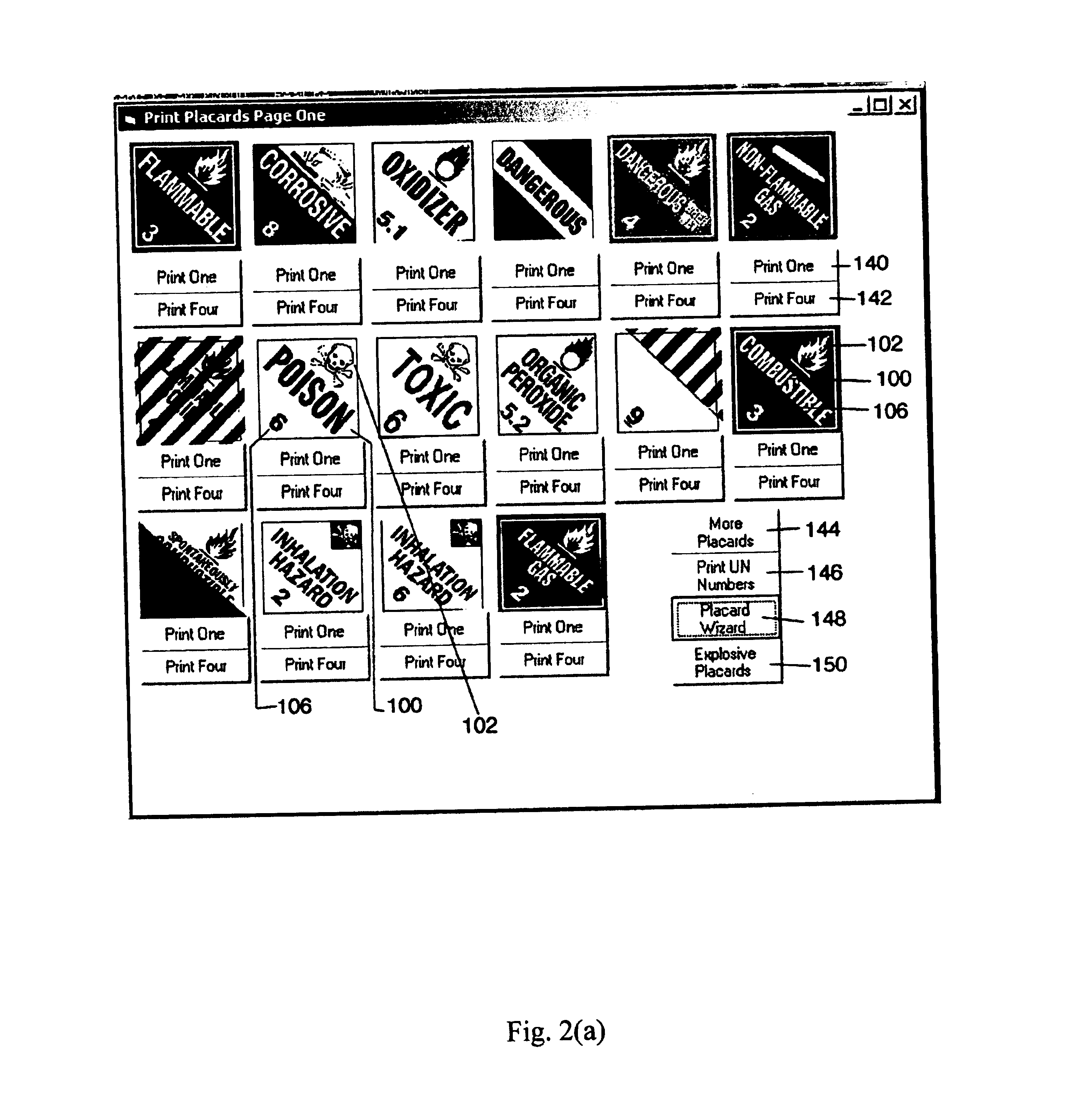System, method and apparatus for on-demand printing of hazardous materials placards for use in the transportation and/or storage of hazardous materials
a technology for hazardous materials and placards, applied in typewriters, instruments, computing, etc., can solve problems such as system failure to achieve widespread acceptance in the marketplace, inadequate placards, and companies facing a tough dilemma of whether to modify existing placards
- Summary
- Abstract
- Description
- Claims
- Application Information
AI Technical Summary
Benefits of technology
Problems solved by technology
Method used
Image
Examples
Embodiment Construction
FIGS. 2(a)-(d) include depictions of exemplary hazardous material placards 100. For example, FIG. 2(a) illustrates several placards 100, including a “poison” placard 100 and a “combustible” placard 100. The referenced “poison” placard includes a graphical symbol 102 that is indicative of poison and a class number 106 that is indicative of the class of hazardous materials to which that particular “poison” placard pertains. Similarly, the referenced “combustible” placard includes a graphical symbol 102 that is indicative of a combustible material and a class number 106 that is indicative of the class of materials to which that particular “combustible” placard pertains. Hazardous material class and subclass numbers, which are well-known in the art, are used to denote a relatively broad class of hazardous materials.
FIG. 2(c) illustrates several depictions of exemplary placards 100 that include an identification number field 104. The UN number that corresponds to the specific type of haz...
PUM
 Login to View More
Login to View More Abstract
Description
Claims
Application Information
 Login to View More
Login to View More - R&D
- Intellectual Property
- Life Sciences
- Materials
- Tech Scout
- Unparalleled Data Quality
- Higher Quality Content
- 60% Fewer Hallucinations
Browse by: Latest US Patents, China's latest patents, Technical Efficacy Thesaurus, Application Domain, Technology Topic, Popular Technical Reports.
© 2025 PatSnap. All rights reserved.Legal|Privacy policy|Modern Slavery Act Transparency Statement|Sitemap|About US| Contact US: help@patsnap.com



